At Clarkston we are what I would characterize as a multiple formation zone team. Our whole offense is based around the inside and outside zone plays. Outside zone is the first thing that we install in camp over the summer with our 7th graders all the way up to our varsity team.
We can run it out of every formation, and every personnel grouping. We run it out of 10 personnel, 11 personnel, 12 personnel, 21 personnel, 22 personnel, and even 32 personnel.
At the JV level it takes a lot of reps to get good at running zone, as it does at any level. When I was a varsity OC in Utah we struggled to get our kids to grasp zone blocking early on. As such, I feel that zone is a very expensive install, so we devote a lot of practice time to it all through the season. A phrase that I come back to that I picked up from Coach Joe DuPaix in Utah was “Inside veer is mama, you always have to protect mama.” I feel that way about zone in our offense. One of my favorite things about zone is what a versatile play it can be.
If we are going to devote so much time to zone blocking in our daily practice routine, I need to get a lot of mileage out of it. In this article I would like to discuss some of the tags and variations that I use both at Clarkston, and that I have used at past stops.
Of course, we run our basic zone read play just like most other teams these days are running.
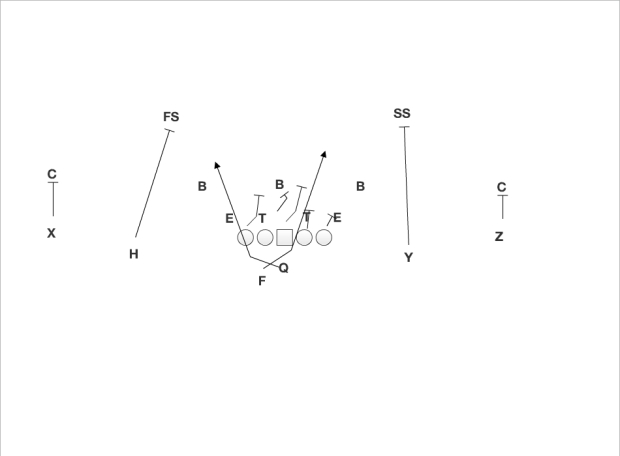
From there, my next inside zone install is the bubble tag. We can read this one of two ways, and I have already talked about it in my RPO article. We can read it presnap. If nobody is walked out over our H we will catch the snap and throw the bubble immediately. If they are honoring him, we will read the flat defender. If he steps up on the run, we will pull and throw the bubble. If he plays the route it pulls one more man out of the box leaving us a 5 or 6 man box.
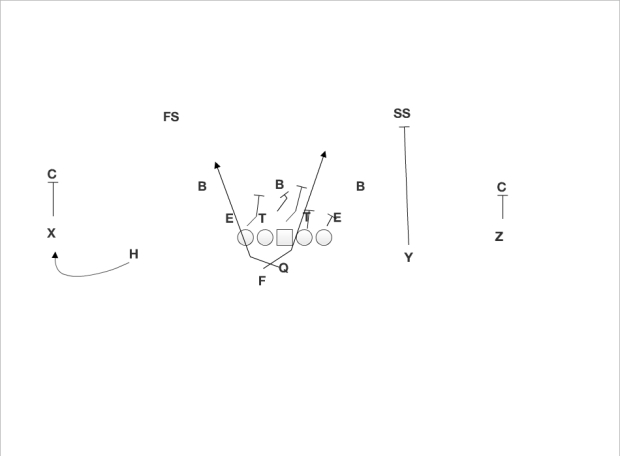
The next one that I like to go to is tagging a go-route for our Y. We see a ton of cover 2/4 so our read here is the safety responsible for the deep half or deep quarter of the field. There are really three scenarios where I’ll call this. Scenario 1 is that a team has rolled a safety down tight into the box and they are not respecting our Tight End. In scenario 2 we will option the safety by messing with our running back. If he comes down on the run we’ll pull it and hit the go route. In scenario 3 a team is blitzing their outside LB a ton and we’ll try to hit it before the TE reaches the safety’s depth.
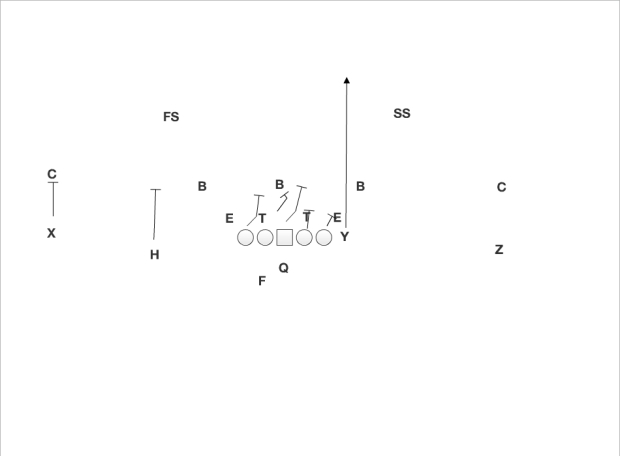
From here we will run zone with a hitch on the backside. We read the flat defender, usually the OLB. If he comes up and plays the run we will pull it and throw the hitch. If he drops into coverage we will give it.
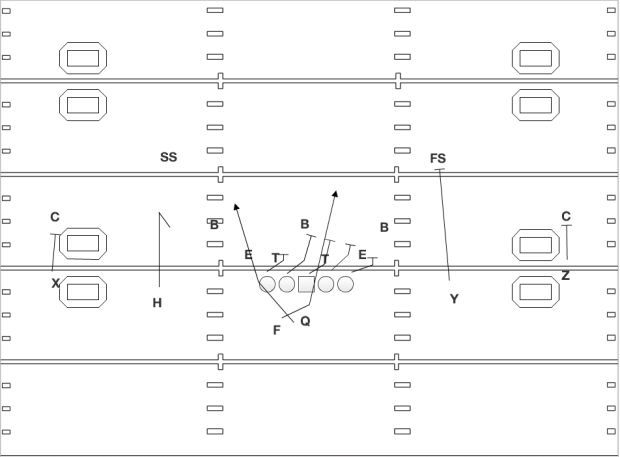
The other tag that I really like to add to our zone play is the midline tag. Instead of reading the BSDE (#3 in our count system) we will read the backside DT.
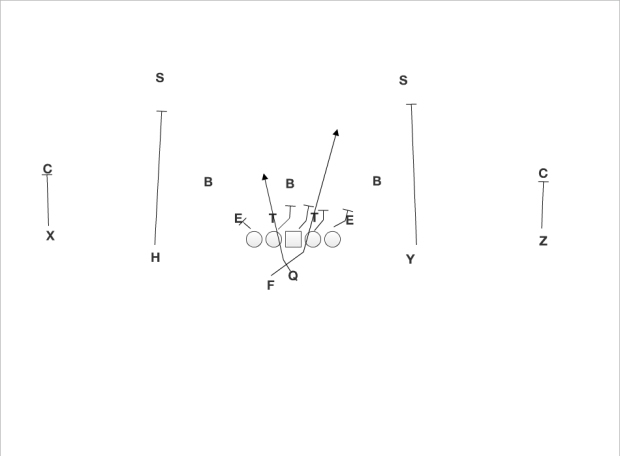
There are a ton of different tags that you can run with your base zone plays, which makes it a very versatile play. Zone blocking in itself is expensive, but with tags you can get a ton out of it. I’d love to hear what other coaches are doing to tag their zone game.